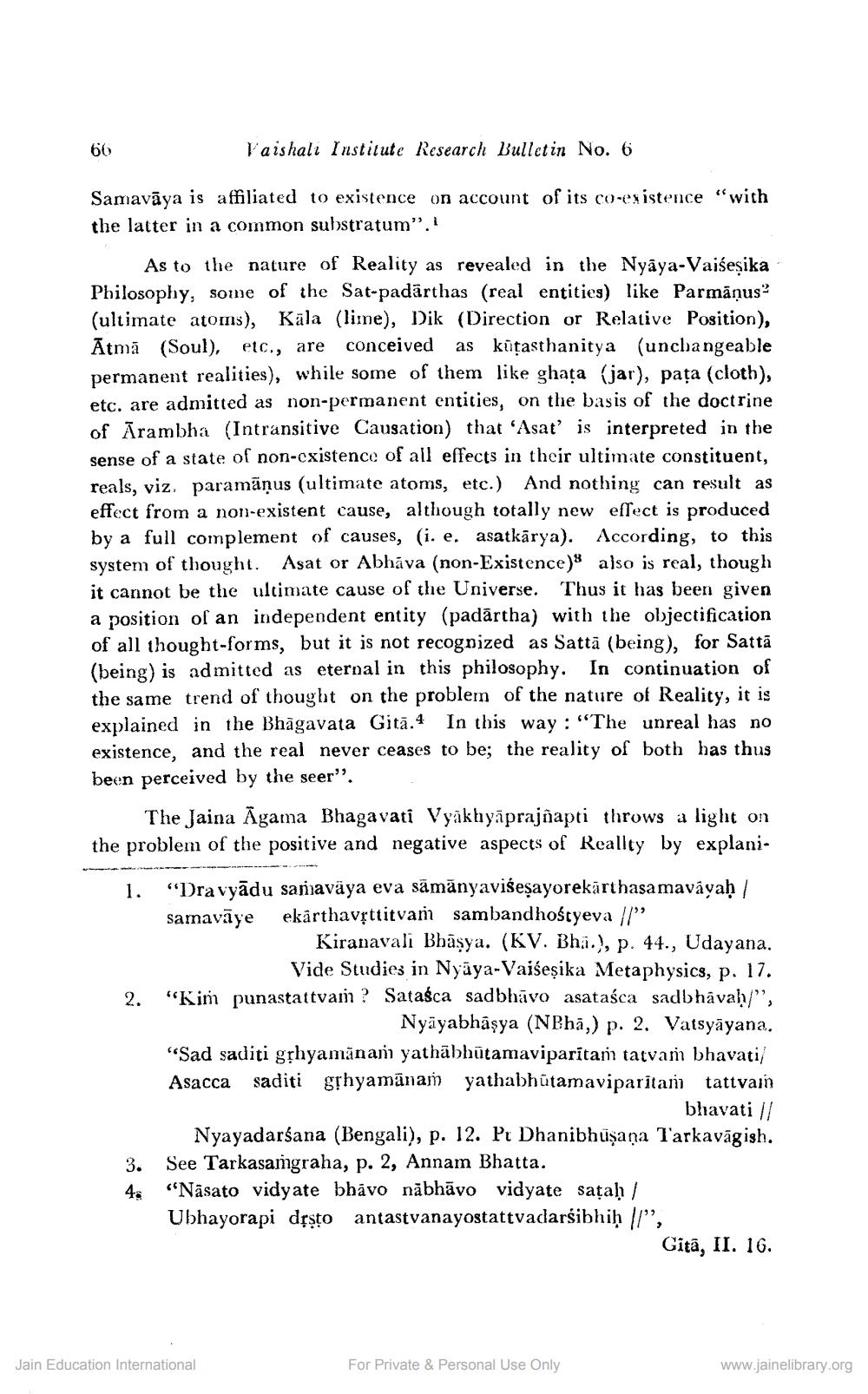________________
66
Vaishali Institute Research Bulletin No. 6
Samavāya is affiliated to existence on account of its co-existence "with the latter in a common substratum”.
As to the nature of Reality as revealed in the Nyâya-Vaišeșika Philosophy, some of the Sat-padärthas (real entities) like Parmānus? (ultimate atoms), Kāla (lime), Dik (Direction or Relative Position), Ātmā (Soul), etc., are conceived as kūtasthanitya (unchangeable permanent realities), while some of them like ghata (jar), pața (cloth), etc. are admitted as non-permanent entities, on the basis of the doctrine of Arambha (Intransitive Causation) that 'Asat' is interpreted in the sense of a state of non-cxistence of all effects in their ultimate constituent, reals, viz. paramāņus (ultimate atoms, etc.) And nothing can result as effect from a non-existent cause, although totally new effect is produced by a full complement of causes, (i. e. asatkārya). According, to this system of thought. Asat or Abhāva (non-Existence) also is real, though it cannot be the ultimate cause of the Universe. Thus it has been given a position of an independent entity (padārtha) with the objectification of all thought-forms, but it is not recognized as Sattā (being), for Sattā (being) is admitted as eternal in this philosophy. In continuation of the same trend of thought on the problem of the nature of Reality, it is explained in the Bhagavata Gitā.4 In this way: "The unreal has no existence, and the real never ceases to be; the reality of both has thus been perceived by the seer'.
The Jaina Āgama Bhagavati Vyākhyāprajāapti throws a light on the problem of the positive and negative aspects of Reallty by explani
"Dra vyādu saniavaya eva sämānyavišeşayorekārthasa mavayah samavāye ekârthavrttitvam sambandhoštyeva //
Kiranavali Bhāsya. (KV. Bhã.), p. 44., Udayana.
Vide Studies in Nyāya-Vaiseșika Metaphysics, p. 17. 2. "Kim punastattvam ? Satasca sadbhavo asatasca sadbhāvah/",
Nyayabhāşya (NBha,) p. 2. Vatsyäyana. "Sad saditi gặhyamanan yathābhūtamaviparitani tatvam bhavati/ Asacca saditi gļhyamānam yathabhūtamaviparitan tattvain
bhavati // Nyayadarśana (Bengali), p. 12. Pr Dhanibhuşaņa Tarkavāgish. 3. See Tarkasamgraha, p. 2, Annam Bhatta.
“Nāsato vidyate bhávo nábhāyo vidyate satah / Ubhayorapi děsto antastvanayostattvadarsibhih //',
Gitā, II. 16.
Jain Education International
For Private & Personal Use Only
www.jainelibrary.org




